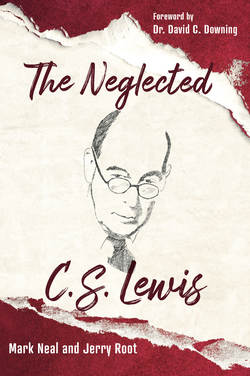Читать книгу The Neglected C. S. Lewis - Mark Neal - Страница 11
На сайте Литреса книга снята с продажи.
Chapter 1 The Glory of the Ideal
ОглавлениеThe Allegory of Love
Norman Cantor, former Rhodes Scholar, Fulbright Professor and medievalist at New York University, wrote Inventing the Middle Ages in which he considers the influence of twenty twentieth-century medieval scholars. By his standards of assessment, he places C. S. Lewis and J. R. R. Tolkien at the top of the list. He observes, “Of all medievalists of the twentieth century, Lewis and Tolkien have gained incomparably the greatest audience, although 99.9 percent of their readers have never looked at their scholarly work.”8 And, of Lewis, he notes that “He had established his reputation as a leading medieval literary historian with The Allegory of Love (1936).”9 Before the publication of this book, Cantor says:
No one in the English-speaking world had up to then the learning, insight, and courage to attempt such a sophisticated definition of high medieval culture. There had been valuable discussions of particular poets and treatises on philosophy and theology. But Lewis tried to define the essence of twentieth-century literary imagination and did so in a formula that has withstood the challenge of a half century of research and reflection.10
In fact, Cantor observes that “Lewis saw more deeply into medieval culture than the neo-Thomists did.” Here it is worthy to note that while many of the interpreters of the development of intellectual history tend to follow the philosophers and theologians, Lewis propounds the merit of following the ideas that develop along literary lines. Furthermore, the medieval imagination—as Lewis summed it up near the end of his life—“is not a transforming imagination like Wordsworth’s or a penetrating imagination like Shakespeare’s. It is a realizing imagination.” Cantor adds that while “Lewis left a great many questions unanswered or even unasked about the nature of the Middle Ages … what he had to say was persuasive and largely incontestable.”11
The Allegory of Love is Lewis’s monumental work about the medieval love allegory, and he traces developments in the literature of that age, moving from the celebration of adultery to literature that elevates the Christian ideal of marriage and holds it in high regard. He looks at some of the most significant medieval texts in order to mark this development. There is much of ancillary value in Lewis’s exploration, but this development toward a Christian view of marriage was Lewis’s main point in The Allegory of Love, and it is the thread we will follow in this chapter.
Margaret Hannay suggests that Lewis’s point in The Allegory of Love was to refute five misunderstandings of Spenser current in literary circles. These are an overemphasis on political allusions, language, the allegorical nature of the work, Protestantism, and moralism. While Lewis does discuss these matters, they are not the point of his book, and such clarifications would not have established his reputation as a literary historian the way The Allegory of Love, in fact, did. A closer read, with an eye toward grasping the overall reach and flow of what Lewis posited, can be found in literary scholar Stephen Yandell’s essay on the text. He observes that Lewis’s point, building to a crescendo throughout the medieval courtly tradition, is, for Spenser “to employ the allegorical form masterfully as a way of showing the inner complexities associated with passionate, Christian, married love.”12
The thesis of The Allegory of Love sets forth how the Christian concept of marriage was elevated gradually and idealized through the romantic literature of the Middle Ages. What Lewis says may have significant application in light of some of the current challenges to marriage confronting our culture today; however, applications to current circumstances will have to be drawn inferentially. Certainly, Lewis could not have anticipated the state of affairs surrounding the present interest in same-sex attraction. Nothing in the history of thought and culture could have allowed him to expect such a thing.
The absence of comment by Lewis about same-sex attraction does not mean that he was unaware of challenges that faced traditional marriage in the past. In fact, the frequency with which he writes about marriage provides much grist for thought. Most prominently, Lewis detects one particular challenge to marriage as evidenced in the Middle Ages. It was the age of the Crusades and chivalry, an age characterized by the idealization of knights in their armor, quests, and the need to rescue damsels in distress. In this time, marriage was threatened most of all by adultery.
